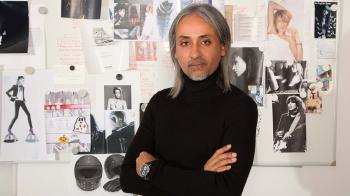You are Global Creative Director at Montblanc. What does the role entail?
I have been creative director for over four years and I’m responsible for all product categories. My design team and I create all the products that you see in stores, whether they are writing instruments, leather goods, watches or accessories.
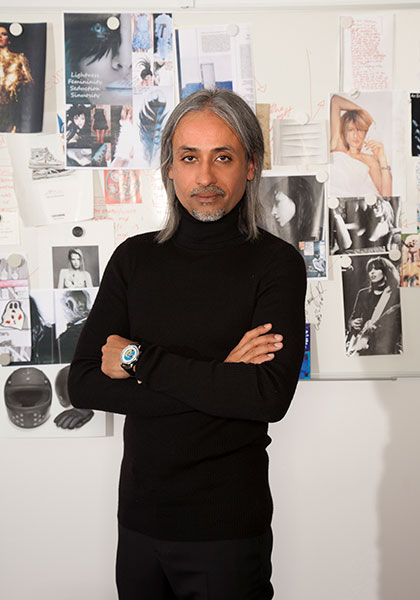
How do you work together with Davide Cerrato on designing Montblanc watches?
We work very closely together. When Davide arrived it was amazing, because he is someone who has a very strong knowledge of sports and professional watches – a field that I knew about but I was more into classical watchmaking codes. We also shared the idea that customers were looking more into the provenance of a piece. So rather than telling them what a watch can do, we wanted to tell them what it is about. We had already started working on the 1858 collection before he arrived, so when he arrived we were able to harness his knowledge and take things further. Then we were able to start working on the Timewalker collection together, which was perfect because of his knowledge of the codes for sports and professional watches.
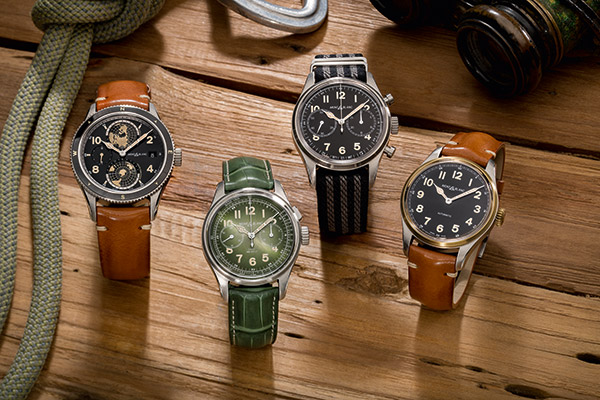
Few brands have someone like you who takes overall design responsibility for such different product categories. Is that a challenge?
It’s something that just happened. I am a fashion designer and from fashion I moved into accessories. When Montblanc offered me the position as global creative director I jumped at the opportunity. When I first started we had a studio and three different manufactures and different categories. What I tried to do was create a roadmap. I closed the Paris design studio and put the designers inside the manufactures themselves. Then I started aligning the designers with the different categories. Strategically, it made sense to build on that. Looking back, if you had asked me at the time how I could oversee four different product categories, I probably would have said that it would be impossible. But we have all grown into it.
Coming from fashion and accessories, did you have to adapt your creative process for watch design?
Actually, coming from the world of fashion prepared me well for working with Jérôme Lambert [Editor's note: former CEO], because he works at such phenomenal speed! Because I moved from fashion to accessories, this also accustomed me to working with different craftsmen and my head was constantly switching from shoes to bags to jewellery to hats... Now I could be sitting in Florence working with the leather team but at the same time the writing instrument team in Hamburg might be sending me designs for the next limited edition and the watch team could call me asking me for my opinion on some new hour markers.
You mentioned the aspect of speed, but surely the lead times in watchmaking are longer. How do you organise the watch design with that in other product categories?
It’s simply a question of planning. We launched a new luggage line a couple of weeks ago in Florence. So when I’m talking about the design phase for that I have to go back nearly two years. I am already working on collections for 2021-2022 so I am far ahead. I am constantly moving backwards and forwards in time, for which I need to be structured.
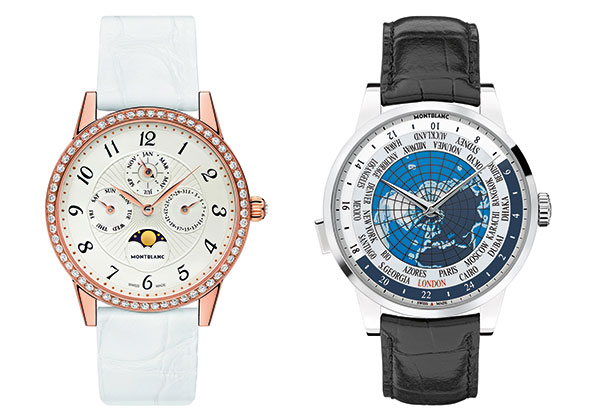
As far as watchmaking is concerned, I remember starting at Montblanc in May and the first SIHH was the following January. We presented the Bohème and the Spirit and one journalist asked me how I many corners I had cut to launch two new watches in nine months, since it normally takes at least two years. I actually told him that we didn’t cut any corners; if anything we had added twenty more corners! The fact is that when you work in a segment like watchmaking where the design team works so closely with movement constructors and case makers, you can already save a lot of time.
In recent years we have seen ever increasing value for money in Montblanc watches. Is this something that you have been consciously aiming for?
Yes, but you have to think of things in a broader sense. It is not just me, it is not just a movement designer, it’s an iterative process that could involve any number of people. What I love about working at Montblanc is that somebody can come up with an idea and then everyone will work on it together. Because we have research and development and production in-house, we can work much quicker and delve much deeper. This is what allowed us to “share the passion for fine watchmaking”, which was the concept devised by Jérôme Lambert.
How important is the heritage of the Minerva brand for you?
It is extremely important. For Minerva and for the writing instruments, we have so much history and so much reason to be. You can no longer simply attach your brand name to a product. New customers in particular are looking for the reason behind a product. You can call this generation whatever you like, but I like to call them “digital alchemists” and they have a primal instinct. Over the past ten years crafts such as hat making, basket-weaving, porcelain making and even cooking have enjoyed a resurgence in popularity. It’s because people want to understand crafts that are at risk of disappearing altogether. We have an archive that dates back 110 years for writing instruments and 160 years for Minerva, so this is an endless source of inspiration.
Does the Goodwood Festival of Speed provide inspiration?
I have been coming to Goodwood for the past 12 years. It is a great source of inspiration because, like Montblanc, it was born out of passion and strives for excellence. Goodwood represents a spirit. It’s not just about the hill climb but also about everything that goes with it. Of course there is a competitive aspect, but there is once again the reason behind the event and the passion behind the people who are participating.
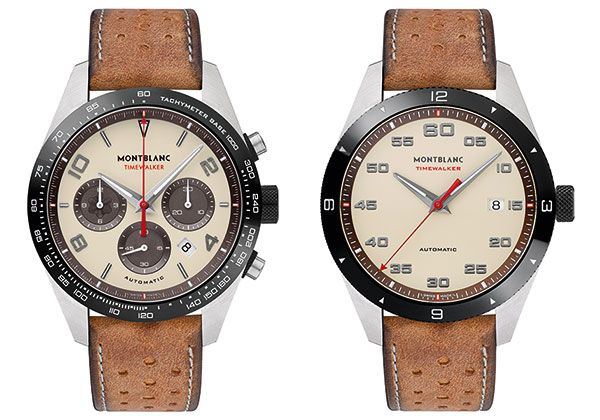
What other areas compare with the Goodwood Festival Speed for you as far as inspiration is concerned?
Riding. I am a passionate horseman. My stables are actually very near to Goodwood. I spent most of my week travelling, but a large part of the weekend I spend in my stables with my daughter. I spend my week communicating with people and conveying my ideas and it’s the same with the horses, but I also have to listen to them. When I go riding it clears my mind and I also have fresh ideas. Inspiration doesn’t just come from one source and doesn’t just appear from nowhere. It’s hard work and you have to mix different ideas and try out different things. When it works you don’t shout “Eureka!”, you just breathe a sigh of relief.
